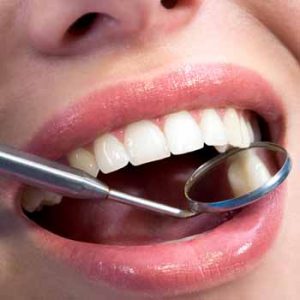
More evidence that low-calorie sweeteners are bad for your health
Studies show that artificial sweeteners can raise the risk of hypertension, metabolic syndrome, type 2 diabetes and heart disease, including stroke.

Natural Health News — Here’s some good news if you are not a fan of the dentist’s drill.
A new study by Australian researchers has revealed that tooth decay (dental caries) can be stopped, reversed, and prevented without the need for the traditional ‘fill and drill’ approach that has dominated dental care for decades.
The results of the seven year study, published in Community Dentistry and Oral Epidemiology, found that the need for fillings was dramatically reduced through preventative oral care alone.
Fillings not always necessary
“It’s unnecessary for patients to have fillings because they’re not required in many cases of dental decay,” said the study’s lead author, Associate Professor Wendell Evans of the University of Sydney.
» Tooth decay has long been assumed to require aggressive treatment in order to stop its progression. This treatment involves immediate ‘drilling and filling’ of the tooth.
» However new research suggests that decay does not always progress quickly and that an active ‘watch and wait’ policy, which involves good dental hygiene may slow its progression and reduce the need for fillings by up to 50%.
» The authors call for a new, more cautious approach to dental practice.
“This research signals the need for a major shift in the way tooth decay is managed by dentists…Our study shows that a preventative approach has major benefits compared to current practice.”
Evans goes on to say that for a long time it was believed that tooth decay was a rapidly progressive phenomenon and the best way to manage it was to identify early decay and remove it immediately in order to prevent a tooth surface from breaking up into cavities. After removing the decay, the tooth is then restored with a filling material – a process sometimes referred to as ‘drilling and filling’.
“However, 50 years of research studies have shown that decay is not always progressive and develops more slowly than was previously believed. For example, it takes an average of four to eight years for decay to progress from the tooth’s outer layer (enamel) to the inner layer (dentine). That is plenty of time for the decay to be detected and treated before it becomes a cavity and requires a filling,”says Evans.
‘Partnership’ between dentist and patient
In response to this Evans and his team have developed the Caries Management System (CMS) – a set of protocols which help dentists assess the risk of decay, interpret dental X-rays, and initiate specific treatment of early decay (decay that is not yet a cavity).
This system has four key points:
Tested on high risk patients it showed that early decay could be stopped and reversed and that the need for drilling and filling was reduced by 30-50 % compared to the control group.
“A tooth should be only be drilled and filled where an actual hole-in-the-tooth (cavity) is already evident,” said Evans.
He adds that the reduced decay risk and reduced need for fillings was understandably welcomed by patients. However, he emphasizes that patients play an important role in the success of the treatment and urges that dentists and patients must work in partnership for it to be most successful.

Please subscribe me to your newsletter mailing list. I have read the
privacy statement